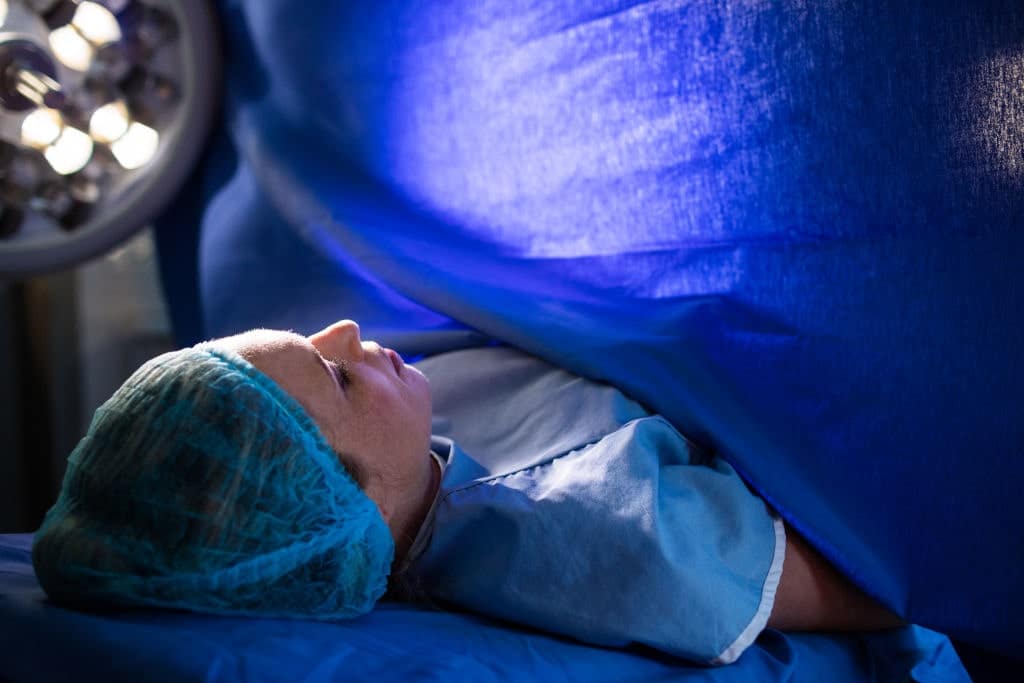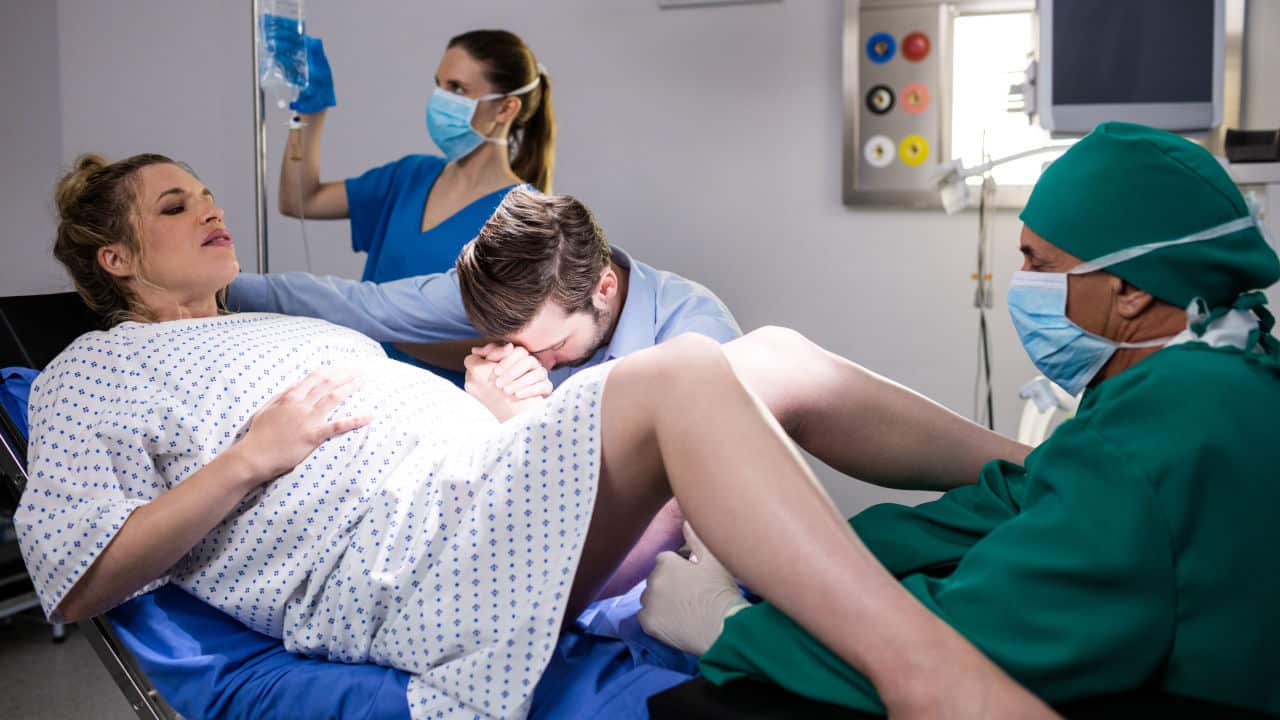An emergency C-section is one that is performed quickly due to imminent concern for the mother’s and/or baby’s health. It is also known as a cesarean section. The ideal time between the need to conduct an emergency C-section and birth is 30 minutes. However, the procedure itself may take up to 75 minutes.
Any C-section, whether planned or unplanned, is a huge procedure that needs a room full of medical staff and a lot of planning. This implies that many more medical professionals must prepare more quickly than usual if a patient requires an emergency C-section.
According to the Centers for Disease Control and Prevention, more than 1.2 million newborns are born via cesarean section yearly. This accounts for roughly one-third of all babies born in the United States.
When Is An Emergency C-section Required?
The reasons for an emergency C-section differ from those for a scheduled C-section.
In essence, an emergency C-section occurs when the baby refuses to cooperate with the intended exit. It may also be needed if the baby decides to push its way out ahead of a scheduled or unexpected C-section. It could also indicate that the mother’s health is a concern and that waiting for progress isn’t the best option.
Some of the reasons for emergency C-sections include exhaustion, prolonged labor, and underlying or arising health concerns. Other conditions like a tangled umbilical cord, placenta problems, and womb tears could also call for an emergency C-section.
Even though emergency C-sections are essential in certain situations, they do not come without disadvantages. Some issues can arise after an emergency C-section. They include laceration of internal organs, the baby developing asthma and an inability to breathe, problems breastfeeding, emotional distress, infection, and pain.
According to studies, 1 in 5 women develops post-traumatic stress disorder after undergoing an emergency C-section, even though their babies are healthy.
Given the rushed nature of a C-section, it is not surprising that every party present in the theater requires a great deal of expertise and attention to detail.
Sometimes, the cause of complications during an emergency C-section is due to an error that occurred during the surgery. It is, therefore, essential to be able to prove the exact cause of the complication while highlighting the deviation from the standard practice should the case be instituted in court.
If a mother or child suffers harm during an emergency C-section, it is possible to prove medical malpractice using medical animation.

What Is The Standard Procedure During An Emergency C-Section?
Before the error that occurred during a procedure can be properly highlighted, a plaintiff can first illustrate the expected standard of practice during an emergency C-section through medical animation.
This way, it would be easy to pinpoint the exact cause of injuries. This could be due to the failure of practitioners to assemble quickly, operations without anesthesia, laceration of an organ or the baby, uninformed consent, and many more.
Time is critical with an emergency C-section. The objective is to get the baby out as quickly as possible. This is needed when the mother’s or the baby’s life may be in danger.
The anesthesiologist might have time to administer enough medication through the epidural if the mother had one while attempting vaginal delivery so she could be awake for the C-section.
The doctor might have to put her under general anesthesia if she didn’t get an epidural. This would keep her from being conscious during the birth.
The incision made during the procedure could be another distinction. A horizontal (bikini) cut is frequently used in non-emergency C-sections. Even in an emergency, if the mother is at term, she’ll probably have this kind of incision.
However, the doctor could decide to make a vertical incision on the uterus during emergency surgery. This will be needed to reach the baby more quickly if the baby needs rapid medical attention. This kind of incision might be required to prevent premature birth, remove adhesions from prior operations, or remove fibroids that are blocking the uterus.
Once more, this depends on the specifics of the delivery. The surgeon will take other medical requirements into account as well as those of the baby.

Using Medical Animation To Prove Errors During Emergency C-sections
Emergency C-section errors range from person to person, sometimes affecting the mother or the baby. In situations like this, medical animation can help to clearly show the surgical error that occurred during the surgery and how it has affected the injured party.
For instance, the incision made during the surgery may be unusually excessive or beyond the traditional way of making such incisions. This can put the mother at risk of various complications both now and whenever she becomes pregnant with another child.
A case in point is that of Pemberton v. Tallahassee Memorial Regional Medical. Here, the vertical incision made during a C-section was wider than the traditional one in medical practice. Hence, placing her at greater risk of uterine rupture. The error in the previous surgery caused her to undergo another emergency C-section when in labor with her subsequent baby.
Another type of surgical error that may occur is an accidental laceration of internal organs or improper handling of the baby. During the surgery, the doctor must be delicate and careful to ensure that everything goes well and no complications arise. When this duty is breached, it is possible to use medical animation to show the doctor’s carelessness.
At other times, the problem that may be faced could be in regard to anesthesia. Anesthesia is needed to numb the pain of the surgery and protect the mother from emotional and physical trauma.
However, when this essential procedure is overlooked due to the emergency of the situation, there is a huge problem. Medical animation can be used to prove the lack or inadequacy of anesthesia during the procedure.
Additionally, a case that can arise from an emergency C-section is attributed to the failure to suggest an emergency C-section when it is absolutely needed.
An example is seen in the case of Martinez ex rel. Fielding v. John Hopkins Hospital. Here, the defendant’s negligence in ordering a C-section caused the baby to suffer from cerebral palsy, retardation, and other disorders.
In a case like this, medical animation can be used. It can showcase how a timely operation would have caused the baby to be born without complications. The extent of the injury can also be showcased to give the jury an idea of how much would be recovered in compensation.
Conclusion
Birth complications relating to emergency C-sections can be very painful, sometimes leading to lifelong injuries.
Fox-AE helps to prove cases of emergency C-section errors using medical animation with an accurate depiction of the facts of the case. Our medical animators can create demonstrative exhibits that give extensive insight into the injury sustained. We work closely with attorneys and expert witnesses to ensure we create an admissible demonstrative exhibit.






